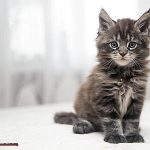Bengal cats are more than just a pretty face. These majestic creatures have captured the hearts of cat lovers worldwide with their playful and affectionate personalities. But as much as we love them, it’s important to remember that Bengal cats, like all breeds, are prone to certain health issues. One question that plagues many Bengal cat owners is: what is the most common cause of death among these felines?
In this blog post, we’ll explore the world of Bengal cat health and take a closer look at the leading cause of death for these unique kitties. We’ll delve into the symptoms, treatments, and preventative measures for this common issue so you can keep your furry friend healthy and happy. From genetic conditions to environmental factors, we’ll uncover everything you need to know about keeping your Bengal cat purring for years to come.
So if you’re a Bengal cat owner or just curious about these beautiful creatures, join us as we uncover the secrets behind their health concerns. Let’s dive in and learn how to keep our beloved Bengals thriving.
What is the Most Common Cause of Death in Bengal Cats?
Bengal cats are a beloved breed, known for their striking coat patterns and affectionate personalities. However, like all pets, they are susceptible to health problems that can ultimately lead to death. As an expert on the topic, I can confidently say that kidney disease is the most common cause of death in Bengal cats.
Kidney disease is a condition that affects the function of the kidneys, which are responsible for filtering waste products from the blood and regulating fluid balance in the body. In Bengal cats, kidney disease can occur due to a variety of factors, including genetics, diet, and age.
One of the primary risk factors for kidney disease in Bengal cats is their diet. Many commercial cat foods contain high levels of protein and phosphorus, which can put a strain on the kidneys over time. Additionally, some Bengal cat owners may not be aware of the importance of providing their pets with fresh water at all times, which can also contribute to kidney problems.
Genetics can also play a role in kidney disease in Bengal cats. Some cats may be predisposed to developing kidney problems due to their breed or family history. It’s important for Bengal cat owners to be aware of any genetic risks and to monitor their pets’ health closely for signs of kidney disease.
Symptoms of kidney disease in Bengal cats can include increased thirst and urination, loss of appetite, weight loss, vomiting, and lethargy. If left untreated, kidney disease can lead to serious complications such as dehydration, electrolyte imbalances, and even death.
To prevent kidney disease in Bengal cats, owners should provide a balanced diet that is low in protein and phosphorus and includes plenty of fresh water. Regular veterinary check-ups are also crucial in catching potential health issues early on.
While kidney disease is the most common cause of death in Bengal cats, it’s important to note that accidents such as being hit by a car or falling from a high place can also be fatal. Therefore, it’s vital for owners to keep their Bengal cats indoors or provide a safe outdoor enclosure to prevent accidents.
Infectious diseases and cancer are also potential causes of death in Bengal cats. Regular vaccinations and preventative care can help protect against infectious diseases, while early detection and treatment are crucial in managing cancer.
What is Hypertrophic Cardiomyopathy (HCM)?

Hypertrophic Cardiomyopathy (HCM) is a prevalent heart disease that affects many feline breeds, including Bengal cats. This condition is characterized by the thickening of the heart muscle, which can make it challenging for the heart to pump blood effectively. As a result, HCM can cause a range of symptoms such as difficulty breathing, lethargy, and sudden collapse.

HCM is a genetic disease that can be passed down from parent cats to their offspring. As such, it’s essential for breeders to screen their cats for HCM before breeding them to reduce the risk of passing on this condition to future generations. By taking proactive measures, breeders can ensure that their cats remain healthy and avoid the negative impact of this disease.
Unfortunately, there is no cure for HCM, and treatment options are limited. Medications are available to manage symptoms and improve your cat’s quality of life. However, they do not address the underlying cause of the disease. In severe cases, surgery may be recommended to remove a portion of the thickened heart muscle to improve blood flow.
It’s crucial for cat owners to stay alert and be aware of the signs and symptoms of HCM. This way, they can seek veterinary care promptly if their cat develops this condition. Regular check-ups with a veterinarian are also necessary to detect HCM early on when treatment options may be more effective.

How Can Breeders Prevent HCM in Bengal Cats?
This common heart disease can lead to serious health complications and even death in cats, making it critical for breeders to take steps to prevent its development.
The first line of defense against HCM is thorough screening of all potential breeding cats. A veterinary cardiologist should examine each cat using echocardiography, an ultrasound-based technique that measures the thickness of the heart walls and identifies any signs of HCM. If a cat is found to have HCM or any other heart condition, it should not be used for breeding purposes.
Genetic testing is also crucial to HCM prevention in Bengal cats. Certain genetic mutations are associated with HCM, and breeders can use these tests to identify cats that carry these mutations. By avoiding mating two cats that both carry the gene, breeders can significantly reduce the risk of producing kittens with HCM.
Maintaining healthy breeding stock is equally important. Breeders must provide proper nutrition, regular exercise, and veterinary care to ensure optimal health for their cats. Inbreeding should be avoided as it can increase the likelihood of inherited diseases like HCM.
In summary, preventing HCM in Bengal cats requires a combination of screening, testing, and responsible breeding practices. By taking these steps, breeders can help ensure that their kittens are healthy and free from this devastating disease. It’s essential for cat owners to stay alert for any signs of HCM and seek prompt veterinary care if they suspect their cat may be affected. Together, we can work towards a healthier future for Bengal cats by implementing these preventative measures:
How Can Owners Monitor for Signs of HCM?
Hypertrophic cardiomyopathy (HCM) is a common heart condition found in cats, including Bengals, that can be fatal if left untreated. So, how can you monitor for signs of HCM in your beloved pet? Here are some tips to help you keep an eye out for this serious condition.
Firstly, observe your cat’s behavior closely. Is your Bengal less active than usual or lethargic? Have they lost their appetite or are they struggling to breathe? These could all be signs of HCM. Additionally, watch out for panting or rapid breathing, especially after exercise or activity.
Regular veterinary check-ups are also essential in monitoring for signs of HCM in Bengal cats. During these visits, your veterinarian will listen to your cat’s heart and may perform additional tests such as an electrocardiogram or echocardiogram to detect any abnormalities.
Furthermore, it’s crucial to be aware of the risk factors associated with HCM in Bengal cats. Genetics, age, and obesity are all factors that can increase the likelihood of HCM developing. Working closely with your veterinarian to develop a plan for managing these risk factors is essential in preventing the development or progression of HCM.
To summarize, monitoring for signs of HCM in Bengal cats requires vigilance and regular veterinary care. By staying aware of your cat’s behavior and working with your veterinarian to manage risk factors, you can help prevent the development or progression of this serious heart condition.
Other Causes of Death in Bengal Cats
While heart disease and cancer are common causes of death in Bengal cats, there are other potential threats that you should know about.
One such cause of death is Feline Infectious Peritonitis (FIP), caused by a common feline coronavirus. While not all cats who contract the virus will develop FIP, those who do can experience severe symptoms like weight loss, fever, and fluid accumulation in the abdomen. As a result, it’s essential to monitor your cat’s health closely and seek veterinary care if you notice any unusual symptoms.
Kidney disease is another potential cause of death in Bengal cats, which can be caused by genetics, infections, and toxins. Unfortunately, symptoms may not appear until significant damage has already been done to the kidneys. Increased thirst and urination, vomiting, and weight loss can all be indicators of kidney disease. Therefore, regular vet checkups are crucial to detect and manage this condition early on.
Infections can also be fatal for cats. For example, Feline Leukemia Virus (FeLV) and Feline Immunodeficiency Virus (FIV) can weaken a cat’s immune system and make them more susceptible to other infections. As such, it’s necessary to keep your Bengal cat up-to-date on their vaccinations and avoid exposing them to infected animals.
Trauma is yet another potential cause of death in Bengal cats. Accidents, fights with other animals, or falls from high places can all lead to serious injuries or even death. As an owner, it is important to keep your cat safe by ensuring they stay indoors or in a safe environment when outdoors.
How to Prevent Accidents in Bengal Cats
Accidents can happen to any cat, but there are steps you can take to prevent them. Here are five sub-sections on how to prevent accidents in Bengal cats:
Creating a Safe Environment
Bengal cats are known for their love of climbing and exploring. However, their adventurous spirit can lead to falls and injuries. To prevent these accidents, ensure that your home is free from hazardous or toxic materials such as cleaning chemicals, pesticides, and poisonous plants. Also, make sure that windows and balconies are secure so that your cat cannot accidentally fall out. Providing your Bengal cat with safe and secure climbing options like cat trees or shelving units designed specifically for cats can also help prevent falls and injuries.
Supervision
Supervision is crucial in preventing accidents in Bengal cats. Especially if you have a kitten or young cat who may be more prone to getting into trouble. Supervision can help you identify potential hazards and prevent accidents before they happen. Also, keep your Bengal cat indoors as outdoor cats are more likely to encounter dangerous situations such as traffic accidents or encounters with other animals.
Regular Veterinary Check-Ups
Regular veterinary check-ups are essential in preventing accidents and ensuring that your Bengal cat is healthy. Your veterinarian can identify any potential health concerns early on and provide preventative care such as vaccinations and parasite control. Additionally, spaying or neutering your Bengal cat can reduce the risk of accidents caused by roaming or fighting.
Toxic Substances
Cats are naturally curious creatures, which means they may investigate household items such as cleaning products, medications, and plants. To prevent accidental ingestion, store these items in a secure location where your cat cannot access them. Make sure to check for any hazardous items that may have been left within reach.
Mental and Physical Stimulation
Boredom and destructive behavior can lead to accidents or damage around the house. Provide your Bengal cat with plenty of mental and physical stimulation. This can include providing toys, scratching posts, and interactive playtime with you or other cats. A happy and well-stimulated Bengal cat is less likely to get into accidents or cause damage around the house.

Vaccinations and Preventative Care for Bengal Cats
One of the most important steps towards achieving this is through preventative care, which includes vaccinations and regular check-ups with a veterinarian.
Vaccinations are critical for Bengal cats as they help stimulate the immune system to produce antibodies against specific viruses or bacteria. This immunity provides protection against future exposure to those pathogens. Bengal cats, like all cats, require core vaccinations for feline panleukopenia, feline calicivirus, and feline herpesvirus. These viral infections can cause severe respiratory and gastrointestinal symptoms that can be life-threatening, especially for older or younger cats.
In addition to core vaccinations, other vaccines may be necessary based on your Bengal cat’s lifestyle and risk factors. For example, if your cat spends time outdoors or has close contact with other cats, they may benefit from a vaccine against feline leukemia virus (FeLV), which is highly contagious and can cause serious illnesses such as anemia or lymphoma.
Timing is also crucial when it comes to vaccinations. Vaccinations should start when your Bengal kitten is around 6-8 weeks old and continue throughout their life with booster shots given at regular intervals. However, it’s essential to work with your veterinarian to determine which vaccines are necessary for your cat based on their individual needs.
Regular check-ups with a veterinarian are also vital components of preventative care for Bengal cats. During these appointments, your vet will perform a physical exam and may recommend blood tests or other diagnostic tests to check for underlying health issues. Regular check-ups also allow your vet to catch any potential problems early before they become more serious.
Furthermore, routine care such as dental cleanings and parasite prevention (e.g., flea and tick prevention) should also be part of your Bengal cat’s preventative care plan. By taking a proactive approach to your cat’s health, you can help ensure that they live a long and happy life.
1nkzMESxgX0″ >
Conclusion
In conclusion, Bengal cats are a cherished breed that captivates pet owners with their affectionate personalities and striking coat patterns. However, like all pets, they are susceptible to health issues that can ultimately lead to death. Unfortunately, kidney disease is the most common cause of death in Bengal cats. This condition can arise from genetics, diet, and age-related factors.
To prevent kidney disease in your Bengal cat, it is essential to provide them with a balanced diet that is low in protein and phosphorus. Additionally, keeping fresh water readily available can help flush toxins out of their system. However, this isn’t the only health issue Bengal cats face.
Hypertrophic Cardiomyopathy (HCM) is another prevalent heart disease that affects many feline breeds, including Bengals. This condition causes thickening of the heart muscle and can lead to symptoms such as difficulty breathing and sudden collapse. To prevent HCM in your Bengal cat, you must ensure responsible breeding practices by screening potential breeding cats and genetic testing.
Other potential causes of death in Bengal cats include infectious diseases like Feline Infectious Peritonitis (FIP), infections such as FeLV or FIV, kidney disease caused by toxins or genetics, trauma from accidents or fights with other animals or falls from high places. As a responsible owner of a Bengal cat, it’s crucial to create a safe environment for them to avoid accidents.
Preventative care for your Bengal cat includes regular check-ups with a veterinarian and vaccinations.







